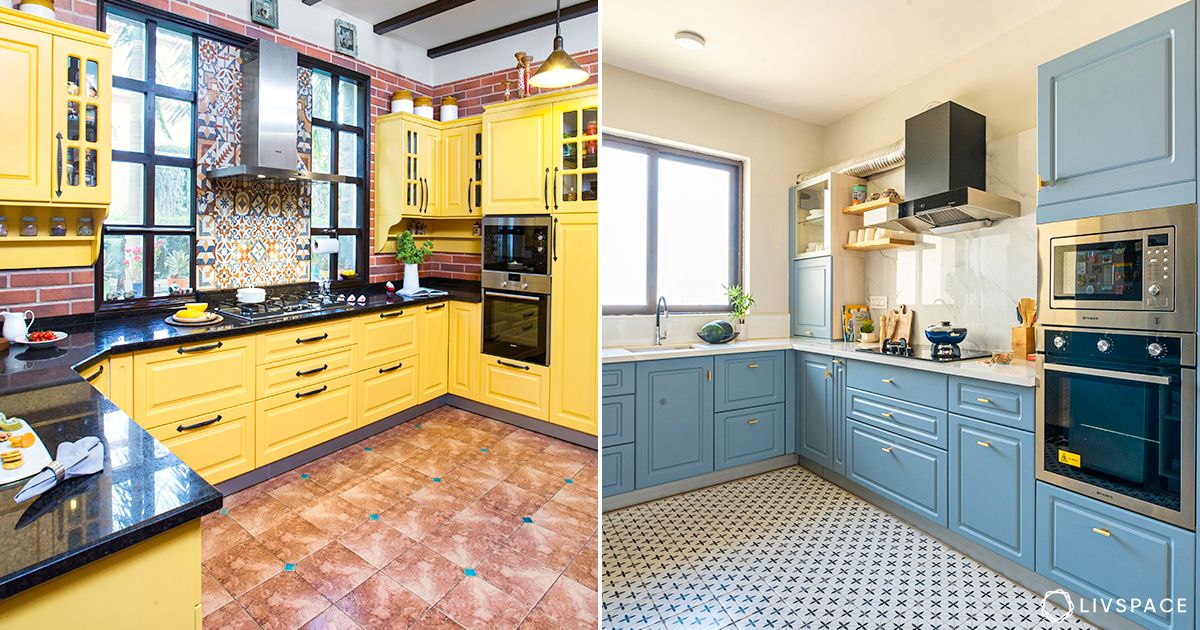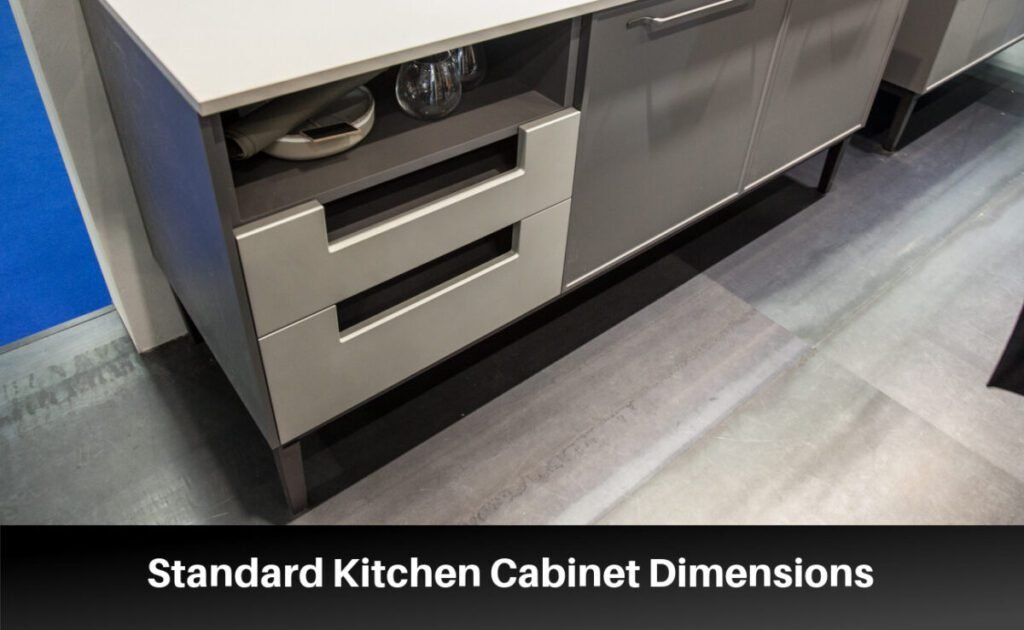Standard kitchen cabinet dimensions vary, but base cabinets typically measure 34.5 inches in height and 24 inches in depth. Wall cabinets usually start at 12 inches deep, with a height ranging from 12 to 42 inches.
Planning a kitchen remodel or designing a new space requires attention to cabinet dimensions to ensure aesthetic harmony and functional storage. Precise measurements are critical to effectively utilizing every inch of kitchen space, catering to accessibility and ergonomic comfort.
Knowing the standard sizes for base and wall cabinets helps you select the correct options to fit your kitchen’s specific design and storage needs. Armed with these critical measurements, homeowners and designers can create a kitchen that is as beautiful as it is practical, optimizing the cooking and storage areas.
Critical Measurements Guide For Cabinets
Embarking on a kitchen renovation or putting together the cooking space of your dreams involves extensive planning, particularly concerning the dimensions of your kitchen cabinets. Getting these measurements right is a cornerstone for both functionality and aesthetics. The Key Measurements Guide for Cabinets ensures you’ll optimize your kitchen’s storage and maintain a seamless flow.
Ensuring you have accurate measurements for your kitchen cabinets is crucial. Tailored to fit the unique dimensions of your kitchen, correct measurements pave the way for efficient space utilization, maximum storage, and easy movement around the kitchen. Whether aiming for a slick modern design or a cozy traditional vibe, precise cabinet dimensions contribute significantly to the kitchen’s overall functionality and style.
Understanding the standard dimensions for various types of cabinets can guide you in envisioning your design and preparing for installation.
- Base cabinets typically measure 34.5 inches in height and 24 inches in depth. The width can range from 9 to 48 inches in increments of 3 inches.
- Wall cabinets are usually 12 to 18 inches deep, with heights ranging from 12 to 42 inches and widths similar to base cabinets.
- Tall cabinets often extend from floor to ceiling, with a standard height of 84 to 96 inches. They typically have a depth of 12 to 24 inches.
To accommodate appliances and work areas, variations in these standards are expected, necessitating careful measurement and possibly some customization.
Choosing between stock, semi-custom, and custom cabinets significantly affects your kitchen layout and the preciseness of the fit.
| Stock Cabinets | Semi-Custom Cabinets | Custom Cabinets |
|---|---|---|
| Pre-manufactured in specific sizes with limited options for finishes and styles. | They are built to order with various sizes, styles, and finishes. | Fully tailor-made to fit the exact dimensions and style preferences of your kitchen. |
While stock cabinets offer quick and easy solutions, semi-custom and custom cabinets provide greater flexibility. They cater to unique kitchen shapes and dimensions, offering an ideal solution for maximizing space and aligning with precise design specifications.
Planning For Functionality And Aesthetics
Designing a kitchen requires a delicate balance between practicality and visual appeal. Each element must serve a purpose while contributing to the overall beauty of the space. This is especially true when it comes to kitchen cabinet dimensions. Optimal cabinet measurements are crucial for a functional and stylish kitchen. Precise dimensions facilitate an efficient workflow and ensure that appliances integrate seamlessly, all while maintaining your desired aesthetic. Understanding the critical measurements in cabinet design can transform your kitchen into an ergonomic masterpiece that also captures your design narrative.
Allocating Space For Appliances And Workflow
Properly allocating space for appliances is non-negotiable for a functional kitchen. Start by considering the major work zones:
- Refrigeration Zone: Space around the refrigerator should allow doors to open fully, typically requiring at least 30-36 inches of clearance.
- Cooking Zone: Stove and oven areas need ample space for heat dissipation and user safety, with a recommendation of 12–15 inches of counter space on either side.
- Preparation Zone: Extend counter space for chopping and mixing activities, ideally with at least 36 inches of width and 24 inches of depth.
- Cleaning Zone: Ensure the sink area has enough clearance for washing activities, with at least 18 inches of counter space on both sides.
Each zone should seamlessly integrate into the kitchen workflow, promoting a logical path between tasks.
Balancing Storage Needs With Design Preferences
Storage is a critical component of kitchen design. To balance storage needs with design preferences, consider these tips:
- Upper Cabinets: Opt for a mix of shelf heights to accommodate various items, ensuring at least 18 inches of clearance above countertops for ease of use.
- Lower Cabinets: Include drawers for utensils and pullout shelves for pots, with a standard height of 34.5 inches before countertop installation.
- Pantry Cabinets: Tailor pantry sizes to fit specific needs, with a width ranging from 12 to 36 inches.
Balance the cabinet dimensions with your design aesthetic by selecting door styles, materials, and finishes that reflect your taste.
Cabinet Dimensions: Interacting With Countertop Height And Depth
The relationship between cabinet dimensions and countertops is crucial. The countertop height and depth must be considered.
| Cabinet Feature | Standard Dimension |
|---|---|
| Base Cabinet Height | 34.5 inches |
| Base Cabinet Depth | 24 inches |
| Countertop Height | 36 inches (after countertop material) |
| Countertop Depth | 25-26 inches |
These standard dimensions ensure comfort during use and provide a uniform look across the kitchen. However, custom dimensions can be designed to fit unique spaces or specific user needs.
Identifying Cabinet Parts And Sizes
Embarking on a kitchen makeover or designing a new space involves knowing your kitchen cabinet dimensions. Familiarizing yourself with kitchen cabinets with different parts and standard sizes ensures a seamless fit and a functional cooking haven. Let’s dive into the essentials of kitchen cabinet measurements and how to navigate the array of cabinet parts and sizes.
Breakdown Of Cabinet Parts: Base, Wall, And Tall Units
Understanding the structure of your storage units is the first step in grasping kitchen cabinet dimensions. Kitchen cabinetry can typically be categorized into three main types:
- Base Cabinets: These are the workhorses of your kitchen, sitting on the floor and supporting countertops. They house pots, pans, and kitchen gadgets.
- Wall Cabinets: Mounted on the wall, they store food, dishes, and small appliances at eye level, making access convenient.
- Tall Cabinets: Also known as pantry or utility cabinets, they extend from floor to ceiling and offer maximum storage for various items.
Typical Dimensions Of Shelves, Drawers, And Doors
The interior components of cabinets, such as shelves, drawers, and doors, come in various standard dimensions:
| Component | Standard Width | Standard Depth | Standard Height |
|---|---|---|---|
| Shelves | 12 to 18 inches | 24 to 30 inches | ¾ inch thickness |
| Drawers | 12 to 36 inches | 18 to 24 inches | 4 to 8 inches |
| Doors | 12 to 36 inches | N/A | 18 to 60 inches |
How Hardware Affects Cabinet Dimensions
Cabinet hardware might seem minor, but it plays a significant role in the functionality and dimensions of your cabinets. The right knobs, pulls, and hinges not only add to the aesthetics but also affect how your cabinets operate. Consider these factors:
- Clearance: Hardware can determine the necessary clearance between cabinet doors and drawers.
- Size and Positioning: The size and placement of pulls and knobs must correspond with the door and drawer dimensions for balanced visual appeal and practical usability.
- Hinge Dimensions: Hinges come in varying sizes and types, influencing how far a door can open and the space needed when designing your kitchen layout.
Opt for hardware that complements the size of your cabinets without compromising on style and function to achieve a harmonious kitchen design.
Customizing Cabinets For Optimal Use
Exploring kitchen cabinet dimensions is critical to making the most of your space. But what takes a functional kitchen to the next level is customization. When every inch counts, tailoring your cabinets for optimal use maximizes efficiency and enhances the overall style and functionality of your kitchen. This guide will delve into the key strategies for customizing cabinets so your kitchen works for you in every way possible.
Utilizing Corner Units And Space Savers Effectively
Corners often represent untapped potential in many kitchen designs. With the right approach, they can become a powerhouse of storage. Corner units, like the lazy Susan, pull-out shelves, and magic corner units, offer accessible solutions for these tricky spaces. Here are some tips for making the most of these areas:
- Measure your corner dimensions precisely to ensure a perfect fit for the chosen unit.
- Use adjustable shelving within corner units to accommodate items of various sizes.
- Le Mans corner systems and blind corner pullouts are perfect for deep storage while maintaining easy access.
Impact Of Adding Extra Storage Accessories
Maximizing your kitchen cabinet dimensions isn’t just about the cabinets themselves—it’s also about the accessories that come with them. Adding extra storage solutions such as drawer dividers, pullout baskets, and spice racks can elevate your kitchen’s functionality.
| Accessory | Function | Benefits |
|---|---|---|
| Drawer Dividers | Organization of utensils and tools | Improved efficiency and faster access |
| Pullout Baskets | Storage for pots, pans, or perishables | Visibility and accessibility for bulky items |
| Spice Racks | Organized seasoning storage | Space-saving and at-a-glance selection |
Innovative Cabinets For Unique Kitchen Layouts
Not all kitchens are made equal; sometimes, a unique layout demands an innovative approach to cabinetry. Specialized cabinets tailored to specific designs can transform an awkward space into an ergonomic and stylish kitchen feature. Consider the following:
- Angled cabinets that fit into atypical spaces while providing storage.
- Tall pantry units create ample vertical storage in kitchens with high ceilings.
- Custom islands with built-in cabinets offer additional counter space and storage in larger kitchens.
Choosing the right cabinet design for your space can mean the difference between a cramped kitchen and a comfortable, functional space that caters to your cooking and lifestyle needs. Investing in these innovations ensures an efficient, clutter-free kitchen, regardless of its layout.
Preparing For Cabinet Fit And Placement
Proper planning before installing new kitchen cabinets can streamline the process and ensure a professional finish. Preparing for cabinet fit and placement is the cornerstone of cabinet installation. Knowing the correct dimensions and how cabinetry fits your kitchen’s unique space sets the stage for a successful renovation. Whether you’re a DIY enthusiast or planning to hire a professional, understanding the critical measurements for your cabinets is essential. Read on to discover how to measure your spaces, account for appliances, understand clearances, and ensure your cabinets are level and plumb.
Measuring Spaces And Accounting For Appliances
Measuring your kitchen space accurately is crucial for fitting cabinets around appliances. Start by sketching a rough kitchen layout, marking the locations of windows, doors, and utilities.
- Record the dimensions of each wall, from floor to ceiling and corner to corner. Use a tape measure for precision.
- Include the size of existing appliances or the ones you plan to install. Leave appropriate gaps for air circulation if recommended by the appliance manufacturer.
- Note down the position of plumbing, electrical outlets, and ventilation ducts that will affect the placement of cabinets.
Ensure all measurements are double-checked. Mistakes here can be costly both in time and resources.
Understanding The Clearance And Sizing For Installation
Cabinet installation requires careful consideration of space and clearance. Cabinet doors and drawers need room to open without obstruction, ensuring a functional and accessible kitchen design.
- Keep a minimum clearance of 30 inches between the countertop and upper cabinets.
- Allow at least 36 inches of walkway space for unhindered movement around the kitchen.
- Consider the countertop overhang and its implications for cabinet width and placement.
Using these guidelines will ensure a comfortable and safe kitchen environment.
Tips To Ensure Level And Plumb Cabinetry
Correctly installing cabinetry so it’s level and plumb isn’t just aesthetically pleasing—it’s structural. Uneven cabinets can lead to faulty doors or stress on the cabinet frames.
- Begin by locating the high point of your floor and the low point of your ceiling. These serve as references for installation.
- Use a laser or spirit level to mark level lines on the wall for the bottom and top of the cabinets.
- Install a ledger board on the wall to support the weight of wall cabinets during installation.
- Be prepared to use shims during the cabinet installation to compensate for any unevenness in the walls or floor.
- After cabinet installation, verify horizontal and vertical alignment with the level again to ensure everything is perfect.
The cabinets that are perfectly level and plumb not only look better but will also last longer.

Frequently Asked Questions On Kitchen Cabinet Dimensions: Key Measurements Guide
What Are Standard Kitchen Cabinet Dimensions?
Standard kitchen cabinets vary, but ordinary wall cabinets measure 12 to 24 inches deep and 30 to 42 inches tall. Base cabinets typically stand 24 inches deep and 34. 5 inches tall, with countertops adding 1. 5 inches.
How To Measure For Kitchen Cabinets?
To measure for kitchen cabinets, determine the layout and mark where appliances will go. Measure the space’s length, height, and depth, accounting for windows, sinks, and appliances. Always double-check measurements for accuracy before ordering or installing cabinets.
Which Sizes Are Best For Upper Kitchen Cabinets?
Upper kitchen cabinets usually range from 30 to 42 inches and 12 to 24 inches in depth, depending on ceiling height and personal preference. The best size satisfies storage needs and proper kitchen proportions.
Can Kitchen Cabinet Depth Be Customized?
Yes, kitchen cabinet depth can be customized. While standard depth is often 24 inches for base cabinets and 12 to 24 inches for upper cabinets, manufacturers can adjust these dimensions for unique spaces or specific storage requirements.
Conclusion
Understanding the standard dimensions for kitchen cabinets is crucial for any remodel or build. By remembering these critical measurements, you’ll ensure your kitchen is functional and aesthetically pleasing. Remember always to double-check specifics against your individual space and design plans.
Craft a kitchen that’s beautiful and perfectly tailored to your home’s unique needs.

Hi, I’m Esrat, and I’m so glad that you found me here at Happy Food Kitchen! I started Happy Food Kitchen in 2023 to have a creative, right-brained outlet to balance my very left-brained career in genetics.






